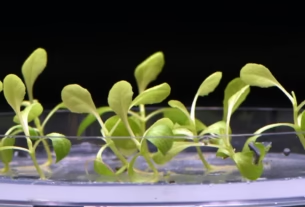In Short:- Australia is accelerating its clean-energy transformation with a landmark goal of sourcing 82% of its electricity from renewable energy by 2030. This ambitious target signals a decisive shift away from fossil fuels toward a more resilient, low-carbon grid. If achieved, it would position the country as a global leader in renewable integration, investment and technology innovation.
Why 82% Matters
Reaching 82% renewable electricity within the next few years would dramatically cut power-sector emissions, lower wholesale energy costs, and improve national energy security. It also promises to attract billions of dollars in private investment, support regional economies and create thousands of new jobs in engineering, construction, manufacturing and maintenance.
Key Drivers Behind the Target
- Decarbonization Goals: Meeting climate commitments and reducing reliance on coal-fired power plants.
- Economic Benefits: Lower electricity costs over time and new revenue streams for communities hosting clean energy projects.
- Energy Security: Reducing vulnerability to volatile fossil fuel prices by tapping abundant domestic solar, wind, hydro and battery storage resources.
Technologies Powering the Transition
- Large-Scale Solar Farms: Utility-scale solar projects will be a major contributor to new capacity additions.
- Onshore and Offshore Wind: Expanding wind power in coastal and inland regions to balance solar generation.
- Energy Storage: Massive battery installations, pumped hydro and emerging long-duration storage to smooth variability.
- Upgraded Transmission Networks: New interconnectors and high-voltage lines to move renewable power to demand centers.
- Digital Grid Management: Advanced forecasting, AI-driven controls and smart meters to improve reliability and reduce curtailment.
Opportunities for Australia
- Job Creation: Thousands of skilled positions in construction, manufacturing, operations and maintenance.
- Innovation Hub: Stimulating R&D in green hydrogen, grid storage, electric vehicles and advanced grid management.
- Regional Development: Rural and regional areas gain new income streams through land leases, community partnerships and local supply chains.
- Export Potential: Leveraging abundant renewables to produce and export green hydrogen and low-carbon products.
Challenges to Overcome
- Transmission Bottlenecks: Building new lines quickly enough to match renewable growth.
- Permitting and Community Engagement: Ensuring fair consultation and addressing local concerns over land use and biodiversity.
- Firming Capacity: Integrating sufficient storage and backup to keep the grid reliable during low wind and solar periods.
- Skilled Workforce Shortages: Training enough engineers, technicians and planners to deliver large-scale projects on time.
Policy and Market Support
To achieve the 82% target, coordinated policy measures are essential. This includes clear planning approvals, incentives for storage and grid upgrades, and market reforms that reward flexible resources and demand response. Long-term investment certainty will be critical to keep costs down and maintain a steady pipeline of projects.
Future Outlook
If Australia succeeds, it could demonstrate to the world that high renewable penetration is both technically feasible and economically advantageous. The transformation also sets the stage for electrifying other sectors—transport, industry and heating—making deeper national decarbonization possible.
Conclusion
Australia’s 82% renewable electricity target by 2030 represents more than just a number; it’s a vision of a cleaner, cheaper and more secure energy future. By scaling up solar, wind, storage and transmission while managing community and workforce challenges, the country has an opportunity to set a global benchmark in renewable integration.




